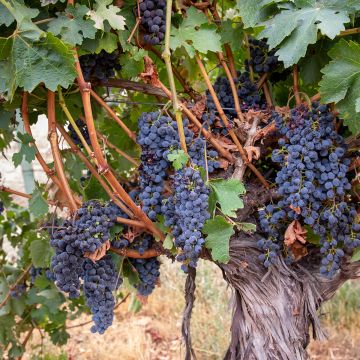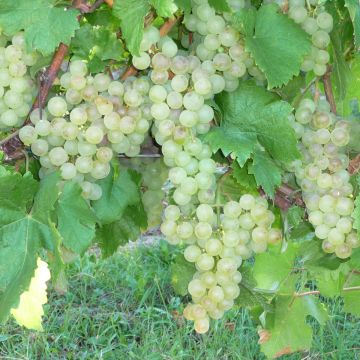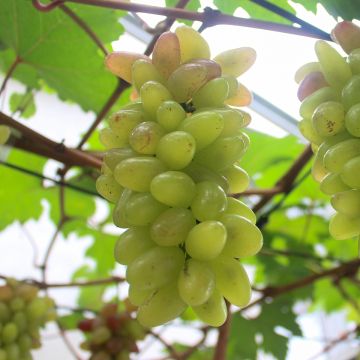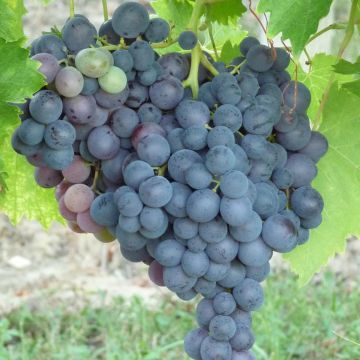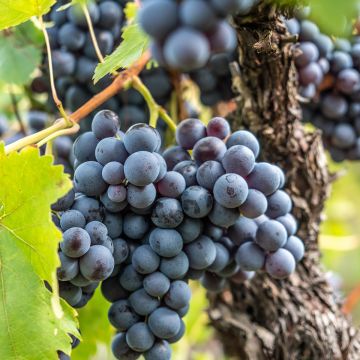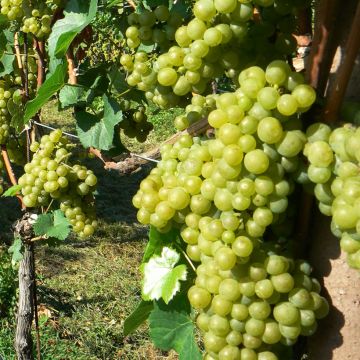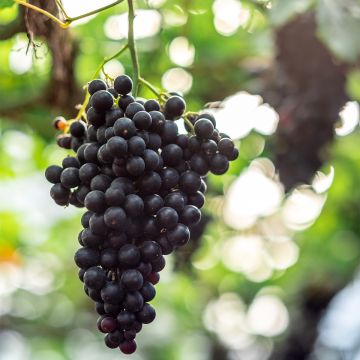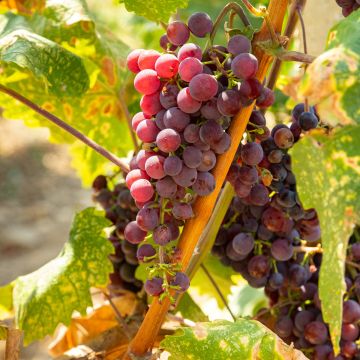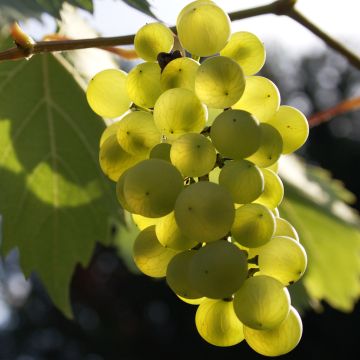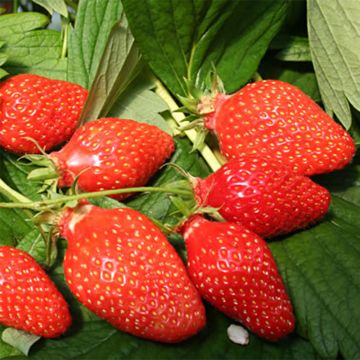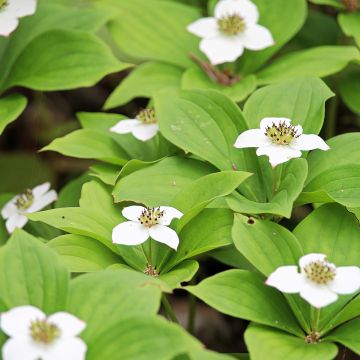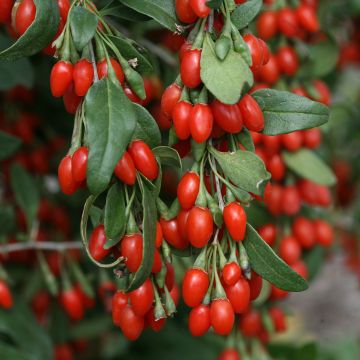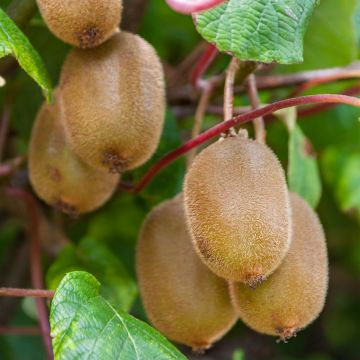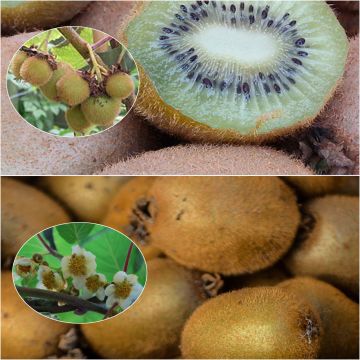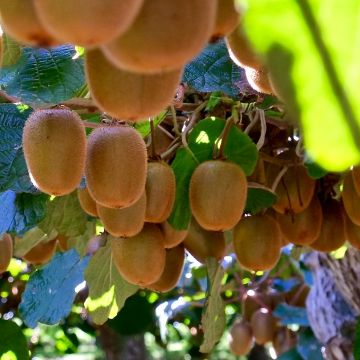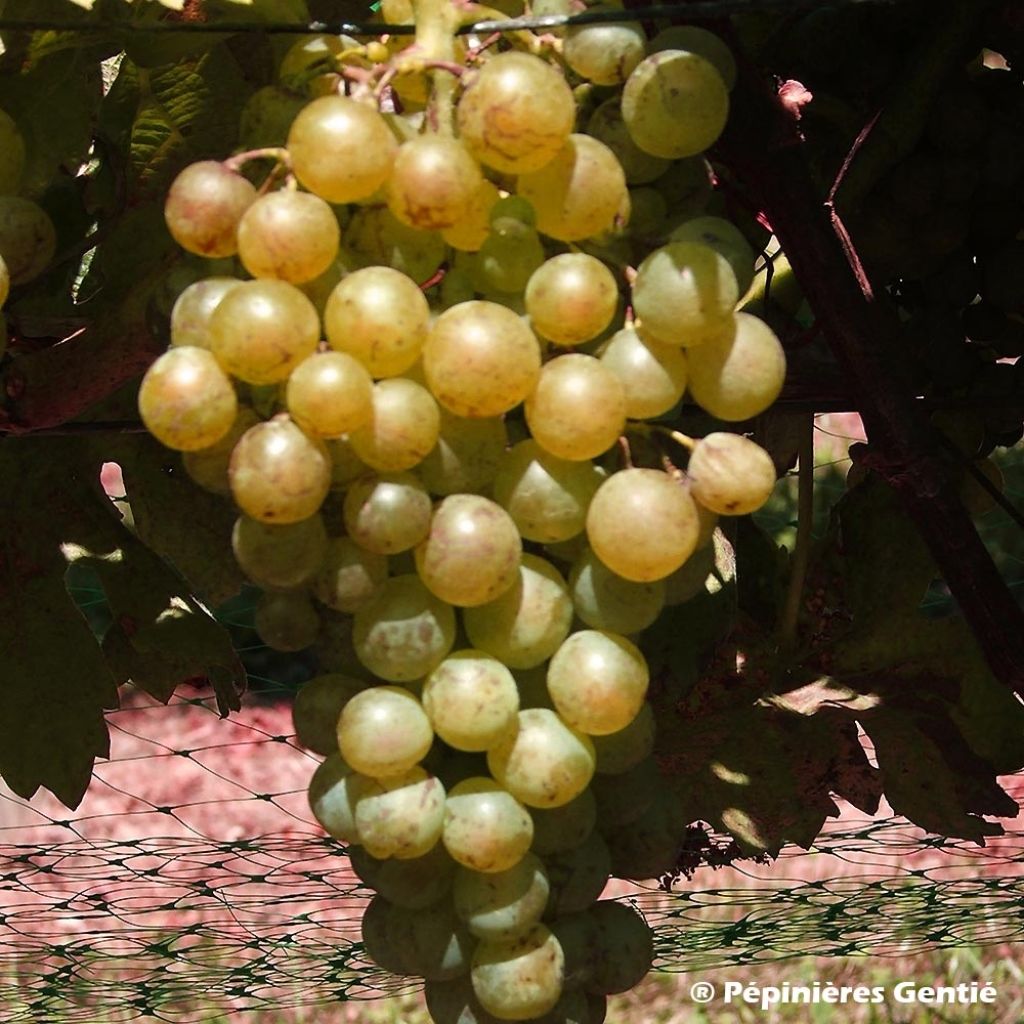

Vitis vinifera Royal Madeleine - Grape vine
Vitis vinifera Royal Madeleine - Grape vine
Vitis vinifera Madeleine Royale
Common Grape Vine, European Grape, Wine Grape
Fast delivery, well-packaged, immediate planting one week after bud break.
Gerard, 21/04/2020
Special offer!
Receive a €20 voucher for any order over €90 (excluding delivery costs, credit notes, and plastic-free options)!
1- Add your favorite plants to your cart.
2- Once you have reached €90, confirm your order (you can even choose the delivery date!).
3- As soon as your order is shipped, you will receive an email containing your voucher code, valid for 3 months (90 days).
Your voucher is unique and can only be used once, for any order with a minimum value of €20, excluding delivery costs.
Can be combined with other current offers, non-divisible and non-refundable.
Home or relay delivery (depending on size and destination)
Schedule delivery date,
and select date in basket
This plant carries a 6 months recovery warranty
More information
We guarantee the quality of our plants for a full growing cycle, and will replace at our expense any plant that fails to recover under normal climatic and planting conditions.
Description
The 'Madeleine Royale' vine (also known as Madeleine Imperiale or Plant of the Corporal) is an ancient vine variety obtained in the Angers region by the Moreau-Robert nursery in 1845. It is a table variety, with white grapes, rather early, appreciated for the taste of its fruits, but probably hindered by the fragility of its clusters during transportation. However, the enthusiast will taste the exquisite flavour of its sweet flesh, often enhanced with a delicately musky aroma at full ripeness, and will delight in its soft, melting and juicy pulp. With a moderately vigorous growth, a little frost-sensitive but very fertile, this vine adapts well to trellis cultivation on the terrace, where it will benefit from the relative shelter of the house. Harvesting begins in August-September, 8 to 15 days before that of the Chasselas.
The wine vine (Vitis vinifera) grew wild more than 5000 years ago. Its introduction in France for cultivation was done by the Romans. Many hybrids were created to vary colours, flavours and uses. The 'Madeleine Royale' grapevine is the result of a cross-breeding between the 'Frankenthal noir' and 'Pinot blanc' grape varieties. This vine is susceptible to mildew, powdery mildew, as well as winter frosts, and very sensitive to grey rot. Its vegetation starts early in spring, like that of the Chasselas vine. It will be pruned more or less short in March.
A sarmentous climbing bush with moderate vigour, the 'Madeleine Royale' vine-plant can easily reach 4-5 m (13-16ft) in height or spread if not pruned. Its final shape will depend on the pruning practiced. It is a frugal sun-loving plant, not very demanding, which even prefers a soil that is both clayey and stony, with a tendency to be chalky, but can be sensitive to prolonged drought. Its long stems attach themselves to their support (trellis, espalier) through large green and voluble tendrils. Its foliage is a deep green in summer and turns the most beautiful gold in autumn. Its flowering occurs in May-June depending on the year and the region, offering very small greenish flowers gathered in rather short and tightly packed conical and cylindrical clusters. Its round to elliptical grapes of medium size (1.3 cm (1in)) have a fairly thin skin, prone to bursting, with a pale yellowish-white colour sprinkled with small grey dots at full ripeness. Their pulp is very juicy, pleasantly sweet, with a slightly aromatic flavour, and quite rich in seeds. The berries, carried by a slender peduncle, detach easily from the cluster. Ripeness: last week of July in the Avignon region, August 15-25 in our cooler and less sunny regions.
The 'Madeleine Royale' table grape can be consumed fresh or as juice, for example in a vitamin-packed fruit cocktail for breakfast. You can use it to decorate a pergola, a trellis or train it against a very sunny wall sheltered from cold winds.
Report an error about the product description
Vitis vinifera Royal Madeleine - Grape vine in pictures
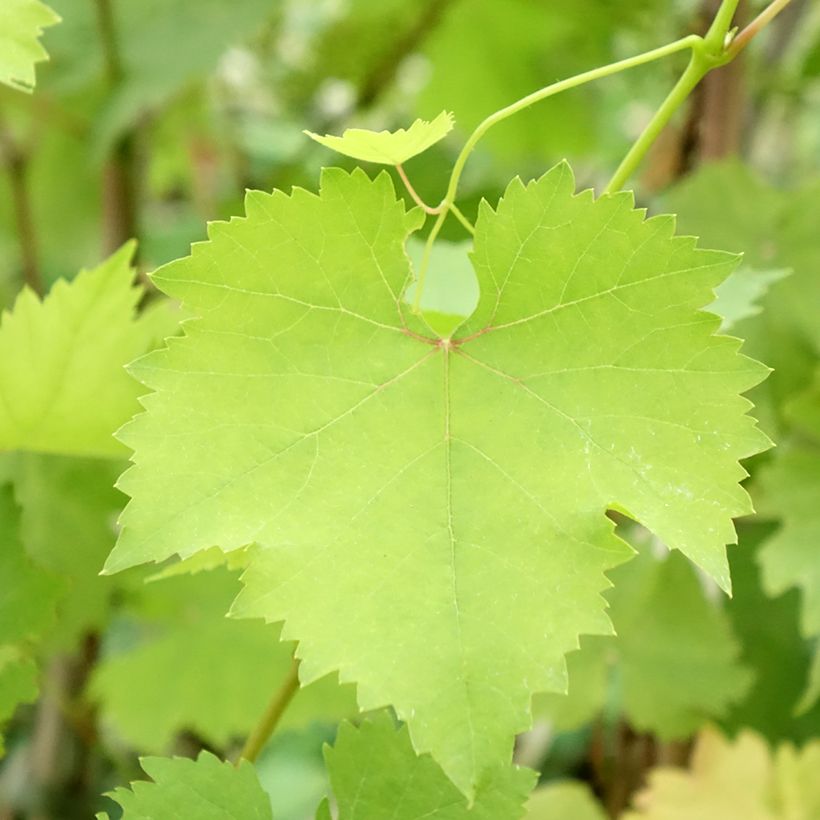



Plant habit
Fruit
Flowering
Foliage
Botanical data
Vitis
vinifera
Madeleine Royale
Vitaceae
Common Grape Vine, European Grape, Wine Grape
Cultivar or hybrid
Other Grapevines
View all →Planting and care
Since the devastation caused by phylloxera in the late 19th century, the vine has to be grafted onto different, resistant rootstocks that are adapted to various types of soil. These rootstocks are derived from naturally resistant American varieties. Plant the 'Madeleine Royale' vine in autumn, in a deep, well-drained soil, even if it's stony, clayey, and limestone-rich, in a sunny location sheltered from strong, cold, and dry winds. This variety is susceptible to severe frost in winter, particularly when it occurs for several consecutive days. Incorporate 3 or 4 handfuls of fertiliser for fruit trees and 2 kg of composted manure for each vine into the planting soil. The roots should not come into contact with the manure. After planting, prune above 2 large buds to encourage the growth of two shoots. Keep the most vigorous one and tie it to a stake. This will be followed by training pruning. The 'Madeleine Royale' vine prefers temperate climates to hot ones. It is susceptible to fungal diseases and will require regular treatments, especially in rainy regions.
The vine doesn't require regular fertiliser application for good yield, on the contrary. Enrich the soil with potash slag, crushed horn, or iron chelate, only every 2-3 years.
Planting period
Intended location
Care
-
, onOrder confirmed
Reply from on Promesse de fleurs
Similar products
Haven't found what you were looking for?
Hardiness is the lowest winter temperature a plant can endure without suffering serious damage or even dying. However, hardiness is affected by location (a sheltered area, such as a patio), protection (winter cover) and soil type (hardiness is improved by well-drained soil).

Photo Sharing Terms & Conditions
In order to encourage gardeners to interact and share their experiences, Promesse de fleurs offers various media enabling content to be uploaded onto its Site - in particular via the ‘Photo sharing’ module.
The User agrees to refrain from:
- Posting any content that is illegal, prejudicial, insulting, racist, inciteful to hatred, revisionist, contrary to public decency, that infringes on privacy or on the privacy rights of third parties, in particular the publicity rights of persons and goods, intellectual property rights, or the right to privacy.
- Submitting content on behalf of a third party;
- Impersonate the identity of a third party and/or publish any personal information about a third party;
In general, the User undertakes to refrain from any unethical behaviour.
All Content (in particular text, comments, files, images, photos, videos, creative works, etc.), which may be subject to property or intellectual property rights, image or other private rights, shall remain the property of the User, subject to the limited rights granted by the terms of the licence granted by Promesse de fleurs as stated below. Users are at liberty to publish or not to publish such Content on the Site, notably via the ‘Photo Sharing’ facility, and accept that this Content shall be made public and freely accessible, notably on the Internet.
Users further acknowledge, undertake to have ,and guarantee that they hold all necessary rights and permissions to publish such material on the Site, in particular with regard to the legislation in force pertaining to any privacy, property, intellectual property, image, or contractual rights, or rights of any other nature. By publishing such Content on the Site, Users acknowledge accepting full liability as publishers of the Content within the meaning of the law, and grant Promesse de fleurs, free of charge, an inclusive, worldwide licence for the said Content for the entire duration of its publication, including all reproduction, representation, up/downloading, displaying, performing, transmission, and storage rights.
Users also grant permission for their name to be linked to the Content and accept that this link may not always be made available.
By engaging in posting material, Users consent to their Content becoming automatically accessible on the Internet, in particular on other sites and/or blogs and/or web pages of the Promesse de fleurs site, including in particular social pages and the Promesse de fleurs catalogue.
Users may secure the removal of entrusted content free of charge by issuing a simple request via our contact form.
The flowering period indicated on our website applies to countries and regions located in USDA zone 8 (France, the United Kingdom, Ireland, the Netherlands, etc.)
It will vary according to where you live:
- In zones 9 to 10 (Italy, Spain, Greece, etc.), flowering will occur about 2 to 4 weeks earlier.
- In zones 6 to 7 (Germany, Poland, Slovenia, and lower mountainous regions), flowering will be delayed by 2 to 3 weeks.
- In zone 5 (Central Europe, Scandinavia), blooming will be delayed by 3 to 5 weeks.
In temperate climates, pruning of spring-flowering shrubs (forsythia, spireas, etc.) should be done just after flowering.
Pruning of summer-flowering shrubs (Indian Lilac, Perovskia, etc.) can be done in winter or spring.
In cold regions as well as with frost-sensitive plants, avoid pruning too early when severe frosts may still occur.
The planting period indicated on our website applies to countries and regions located in USDA zone 8 (France, United Kingdom, Ireland, Netherlands).
It will vary according to where you live:
- In Mediterranean zones (Marseille, Madrid, Milan, etc.), autumn and winter are the best planting periods.
- In continental zones (Strasbourg, Munich, Vienna, etc.), delay planting by 2 to 3 weeks in spring and bring it forward by 2 to 4 weeks in autumn.
- In mountainous regions (the Alps, Pyrenees, Carpathians, etc.), it is best to plant in late spring (May-June) or late summer (August-September).
The harvesting period indicated on our website applies to countries and regions in USDA zone 8 (France, England, Ireland, the Netherlands).
In colder areas (Scandinavia, Poland, Austria...) fruit and vegetable harvests are likely to be delayed by 3-4 weeks.
In warmer areas (Italy, Spain, Greece, etc.), harvesting will probably take place earlier, depending on weather conditions.
The sowing periods indicated on our website apply to countries and regions within USDA Zone 8 (France, UK, Ireland, Netherlands).
In colder areas (Scandinavia, Poland, Austria...), delay any outdoor sowing by 3-4 weeks, or sow under glass.
In warmer climes (Italy, Spain, Greece, etc.), bring outdoor sowing forward by a few weeks.































